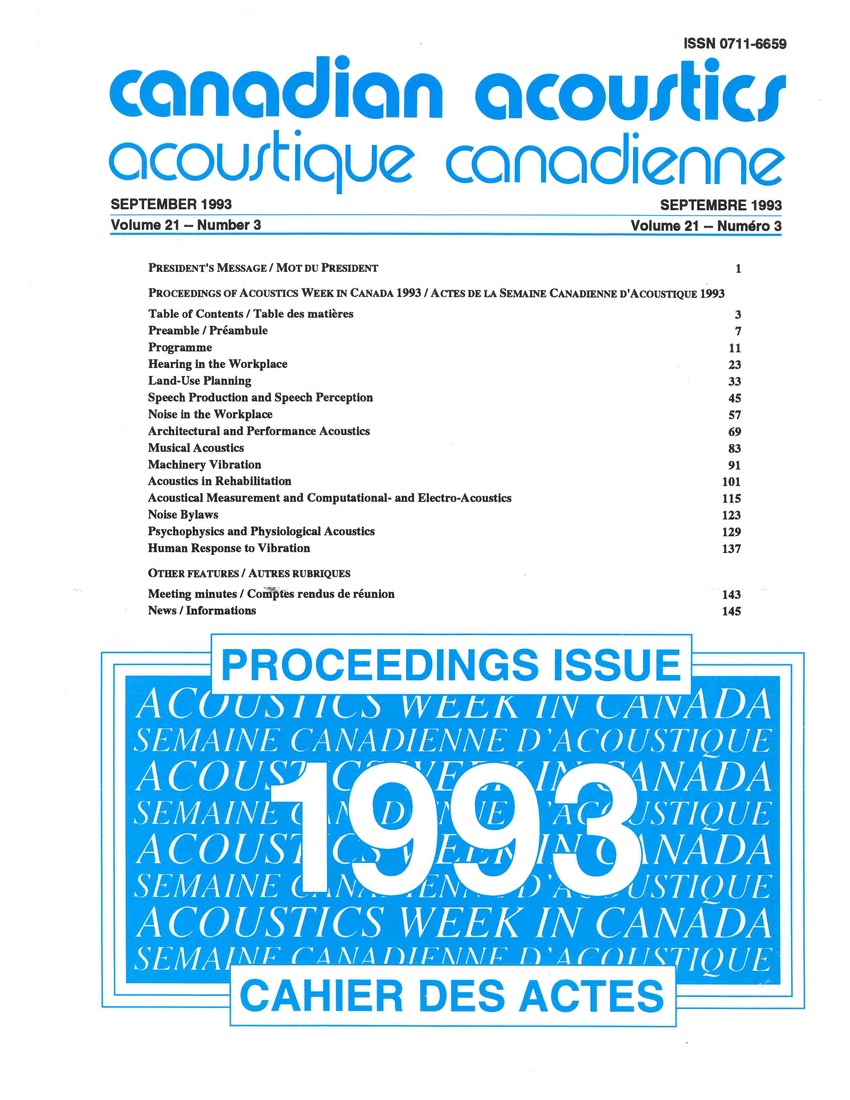Frequency and the sensation of sounds
Keywords:
hearing, psychology, sound sensation, frequency, loudness, pitch, Weber fraction, intensityAbstract
The physical quantities, sound intensity, sound duration and frequency combine in a subtle manner to produce the psychoacoustic quantities, loudness and pitch. In an attempt to isolate the effects of each physical variable, experiments have been conducted in the past to determine the relationship between: (a) loudness and intensity, with frequency held constant; (b) pitch and frequency, with intensity held constant. The relationship between loudness/pitch and intensity/frequency has also been investigated using experiments on auditory discrimination. Discrimination experiments involve determining how much change in intensity (or frequency) is required to elicit a change in biological response. For example, a tone of 100 Hz can probably not be distinguished from a tone of 101 Hz at all relevant sound intensities, as long as the intensity is held constant between the two tones. Commonly one calculates the Weber fraction, which is the change in intensity/frequency divided by the reference intensity/frequency, required to produce a change in sensation. The Weber fraction is calculated over a range of intensities (or frequencies). There are two types of Weber fraction with which the authors shall be concerned, corresponding to experiments (a) and (b) above: (c) fractional changes in intensity, with frequency held constants; (d) fractional changes in frequency, with intensity held constant. The authors discuss these experiments and present a theoretical analysisAdditional Files
Published
How to Cite
Issue
Section
License
Author Licensing Addendum
This Licensing Addendum ("Addendum") is entered into between the undersigned Author(s) and Canadian Acoustics journal published by the Canadian Acoustical Association (hereinafter referred to as the "Publisher"). The Author(s) and the Publisher agree as follows:
-
Retained Rights: The Author(s) retain(s) the following rights:
- The right to reproduce, distribute, and publicly display the Work on the Author's personal website or the website of the Author's institution.
- The right to use the Work in the Author's teaching activities and presentations.
- The right to include the Work in a compilation for the Author's personal use, not for sale.
-
Grant of License: The Author(s) grant(s) to the Publisher a worldwide exclusive license to publish, reproduce, distribute, and display the Work in Canadian Acoustics and any other formats and media deemed appropriate by the Publisher.
-
Attribution: The Publisher agrees to include proper attribution to the Author(s) in all publications and reproductions of the Work.
-
No Conflict: This Addendum is intended to be in harmony with, and not in conflict with, the terms and conditions of the original agreement entered into between the Author(s) and the Publisher.
-
Copyright Clause: Copyright on articles is held by the Author(s). The corresponding Author has the right to grant on behalf of all Authors and does grant on behalf of all Authors, a worldwide exclusive license to the Publisher and its licensees in perpetuity, in all forms, formats, and media (whether known now or created in the future), including but not limited to the rights to publish, reproduce, distribute, display, store, translate, create adaptations, reprints, include within collections, and create summaries, extracts, and/or abstracts of the Contribution.


